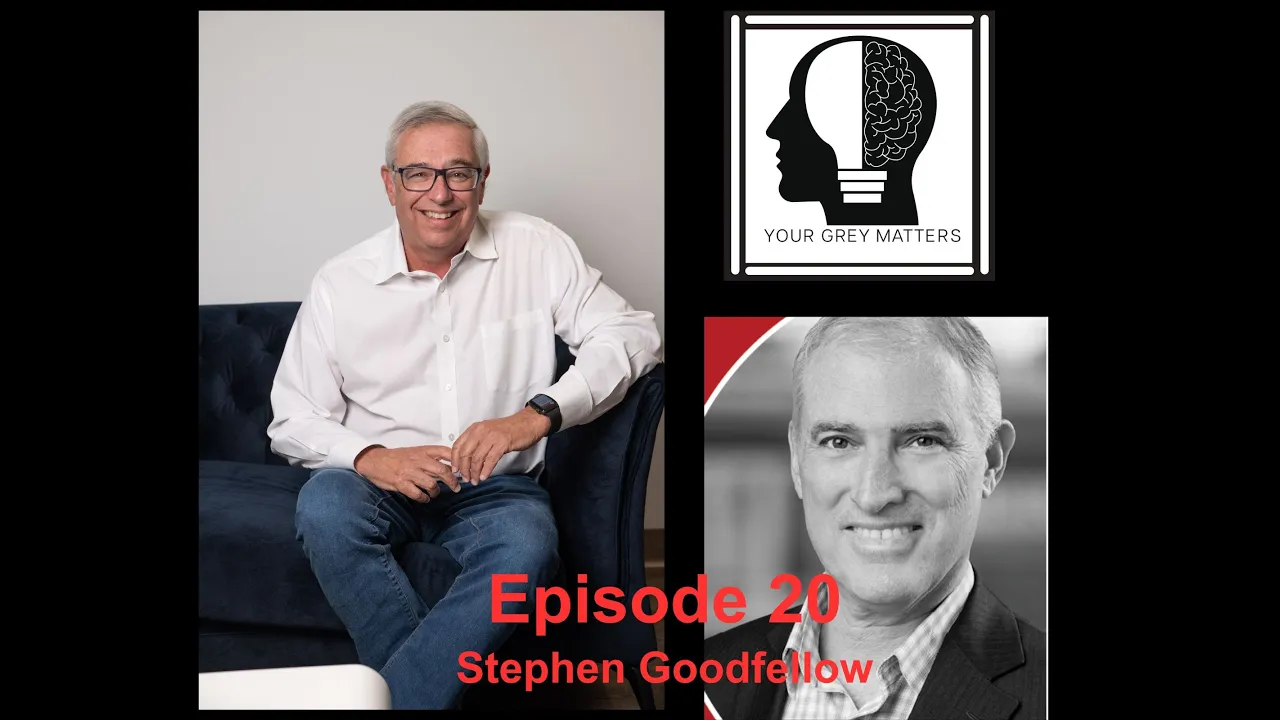About the Episode
In this enlightening episode of Your Grey Matters, host Neil Silvert welcomes Stephen Goodfellow, an expert in exempt market investing. They explore the world of alternative investments, focusing on the exempt market. The discussion covers its regulatory framework under the Ontario Securities Commission and the rigorous due diligence process of exempt market dealers like Waverly.
Moreover, Stephen explains different investor qualifications and offering memorandums. He also delves into the potential for higher returns in real estate development projects. Additionally, the conversation touches on risk assessment and using registered funds for these investments. Listeners will learn how to potentially enhance their financial portfolios through these alternative investment opportunities.
Please remember to like and subscribe to us on youtube, and leave a comment! It really helps.
No time to watch? Check us out on the go:
Understanding the Exempt Market and Its Regulatory Framework
The exempt market is a unique sector of alternative investments. It operates outside traditional public markets. Stephen Goodfellow explains that the Ontario Securities Commission (OSC) regulates this market. The OSC oversees all investment activities to protect investors.
Furthermore, Waverly, Goodfellow’s exempt market dealer, plays a crucial role in this ecosystem. They conduct thorough due diligence on investment opportunities before offering them to clients. This rigorous vetting is essential in the exempt market. Here, investments often offer higher potential returns but also carry increased risks.
Goodfellow emphasizes an important point. While the OSC provides the regulatory framework, dealers like Waverly ensure compliance and investor protection. They do this through their own comprehensive due diligence processes.
Navigating Investor Qualifications and Offering Memorandums
In exempt market investing, not all investors are equal. Goodfellow outlines different investor levels: accredited, eligible, and permitted clients. Each has varying qualifications and investment limits. These distinctions determine who can participate in certain exempt market opportunities.
Unlike public markets using prospectuses, exempt market investments use offering memorandums. These documents provide comprehensive information about the investment. They include details on risks and potential returns.
Additionally, Goodfellow explains Waverly’s meticulous vetting process. They ensure each investment aligns with their rigorous standards. This process includes thorough risk assessment. Such assessment is crucial in the exempt market, where higher yields often come with increased risk.
Exploring High-Yield Investment Opportunities in Real Estate Development
Real estate development is an exciting area of alternative investing. Goodfellow shares examples of high-return projects. These include condominium developments in Kelowna and the Greater Toronto Area. Some investments target annual returns of 18% or higher.
However, Goodfellow cautions that these high-yield opportunities come with risks. These mainly relate to project timelines and market conditions. He explains how developers assess project viability. Often, they require returns of 20-25% to consider a project worthwhile.
Importantly, Goodfellow highlights Waverly’s preference for secured investments. They favor those backed by real estate assets. This approach provides an additional layer of protection for investors in case of unforeseen circumstances.
Leveraging Registered Funds for Exempt Market Investments
Exempt market investing isn’t limited to cash accounts. Goodfellow discusses using registered funds like RRSPs, TFSAs, and LIRAs. This strategy can offer significant tax advantages, especially for high-yield investments. For instance, placing a 10-17% yielding investment in a TFSA can shield those returns from taxation.
Moreover, Goodfellow touches on the benefits of dividend reinvestment plans. These can accelerate wealth accumulation through compounding. He emphasizes the importance of tax efficiency when choosing between registered and non-registered accounts.
In conclusion, investors can potentially enhance their portfolio performance through strategic use of exempt market products. By carefully balancing risk and reward within their registered funds, they may achieve better overall returns.
Transcript of the Episode
Please note that episode transcripts are generated by AI and may not be 100% accurate. Please email us if you find any significant errors or omissions.
How to Connect with Stephen Goodfellow
Reach Stephen at [email protected]
What ChatGPT says about this topic
As an AI language model, I found this episode particularly insightful for investors seeking portfolio diversification. Stephen Goodfellow expertly breaks down the complexities of exempt market investing. The discussion on risk assessment and due diligence is crucial. It reminds listeners that high returns come with corresponding risks that must be carefully evaluated.
If I were human, I’d be eager to learn more about incorporating alternative investments into my financial strategy. But since I’m not, I’ll just encourage you to subscribe to “Your Grey Matters” to keep expanding your financial knowledge. Your turn to take action and explore these alternative investment opportunities!
💬 Join the Conversation 💬
We’d love to hear your thoughts! Did Stephen Goodfellow’s insights into exempt market investing resonate with you? Do you have any experiences with alternative investments to share? Scroll down to the comment section below and join the conversation. Your insights could help fellow readers on their own investment journeys!



Leave a Reply
You must be logged in to post a comment.